https://www.musical-u.com/learn/musicality-podcast-launch-prize-giveaway/
This Monday we are launching The Musicality Podcast: a new show dedicated to helping you level-up your musicality and gain new freedom and confidence in your musical life. To celebrate the launch we’re running a big giveaway contest with an amazing array of prizes to be won from HearandPlay.com, Theta Music Trainer, MusiciansWay.com, The Plucky Pianista/Melody Payne, and Fretboard Toolbox http://musl.ink/podcontest
How good is that feeling when you finish work at the end …
https://www.musical-u.com/learn/tension-release-bitter-sweet-relationships-chords-scales/
How good is that feeling when you finish work at the end of the day? How good is that cold glass of water after working in the sun? This is all tension and release. How does this apply to music? Hohttps://www.musical-u.com/learn/tension-release-bitter-sweet-relationships-chords-scales/
The Musicality Podcast Launch: Prize Giveaway!
This Monday we are launching The Musicality Podcast: a new show dedicated to helping you level-up your musicality and gain new freedom and confidence in your musical life. To celebrate the launch we’re running a big giveaway contest with an amazing array of prizes to be won!
Over the last couple of months we’ve been planning and preparing for this new podcast and I’ve been interviewing some of the music educators I admire most, to pick their brains and share their top tips and strategies that can help you feel more like a “natural” musician. I’ve also dug deep into their own backstories so that you can see that even some of the most impressive musicians weren’t born “gifted” but actually learned their core skills of musicality step-by-step.
I’ve been really honoured to be joined on the show by an amazing lineup of inspiring experts and I can’t wait to share these episodes with you.
Upcoming guests include:
- Natalie Weber from Music Matters Blog
- Jermaine Griggs from HearAndPlay.com
- Steve Myers from Theta Music Trainer
- Gerald Klickstein, author of The Musician’s Way
- Dr. Melody Payne from MelodyPayne.com
- Scott Sharp from Fretboard Toolbox
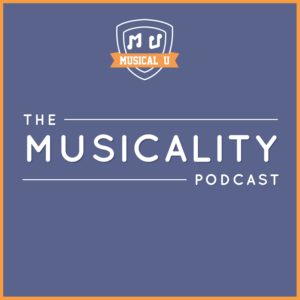 … and a whole bunch more which I would love to announce – but we have to keep some surprises in store! 😉
… and a whole bunch more which I would love to announce – but we have to keep some surprises in store! 😉
We’ll also be offering shorter episodes where I cover a particular topic, such as:
- Playing from a lead sheet
- Whole and Half Steps
- Solfa 101
- Perfect Pitch vs. Relative Pitch
- Starting to sing in tune
- Recovering from mistakes and overcoming stage fright
- Mindfulness and self-talk
I’m so excited for the episodes we have lined up and really wanted to make a big splash with the launch on Monday. Our guests have shared such interesting and valuable insights I want to make sure their episodes reach as many musicians as possible…
So what better way to make a splash than with a huge prize giveaway!
A big thank you to our podcast guests who’ve contributed prizes for this giveaway. It’s a seriously powerful bundle of goodies to upgrade your musicality…
Big Prize Giveaway!
First Prize (worth over $500!)
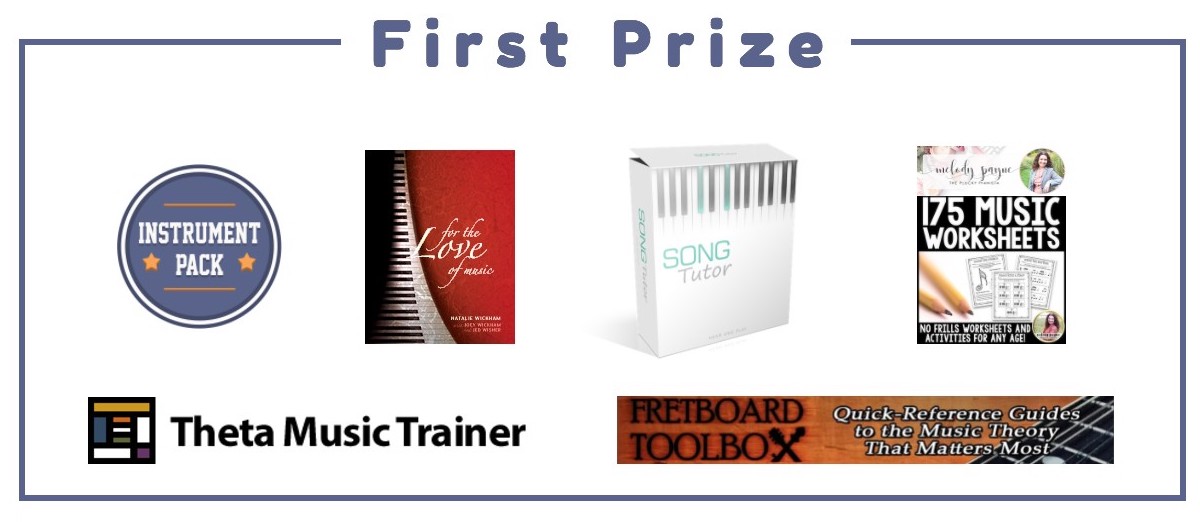
- 1 Year “Instrument Pack” Membership of Musical U (worth $399)
- 1 Year Subscription of Theta Music Trainer (worth $49)
- SongTutor Software from HearAndPlay.com (worth $47)
- For The Love of Music course from Music Matters Blog (worth $25)
- A Toolbox eBook of your choice from Fretboard Toolbox (worth up to $21.95)
- 175 Music Worksheets Bundle from MelodyPayne.com (worth $16)
4 Runner-up Prizes (each worth over $300!)
We also have a powerful combo for four lucky runners-up! As Steve Myers, founder of Theta Music, explains in his upcoming episode: Theta Music Trainer games work best with a bit of explanation and that’s why we feel they’re a perfect companion to Musical U membership.
Four runners-up will win:
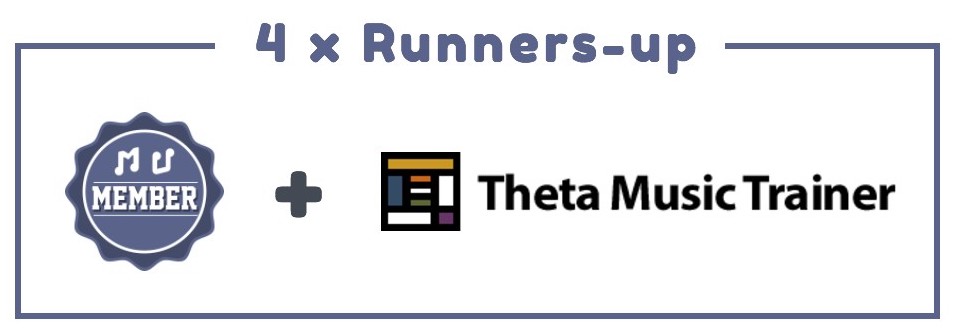
- 1 Year Regular Membership of Musical U (worth $299)
- 1 Year Subscription of Theta Music Trainer (worth $49)
How to Enter…
The giveaway contest officially launches on Monday 11th September and you’ll be able to enter on this page. We’ll be picking the winners at midnight Central Time on Sunday 1st October and announcing them on Monday 2nd October.
To make sure you don’t miss it you can follow us on Facebook and Twitter.
Oh, and there’s one other way…
Podcast Insiders
 A few weeks ago we opened our Podcast Insiders program. It’s a free email signup to get behind-the-scenes info and exclusive bonuses related to the new podcast. So far over 400 people have joined Podcast Insiders and they’ve been hearing about the exciting/challenging/crazy process of launching the new podcast.
A few weeks ago we opened our Podcast Insiders program. It’s a free email signup to get behind-the-scenes info and exclusive bonuses related to the new podcast. So far over 400 people have joined Podcast Insiders and they’ve been hearing about the exciting/challenging/crazy process of launching the new podcast.
They’re also getting bonus entries in the contest as our way of saying thanks for being part of this new project with us. And they get early access to our special “podcast listeners” offer for Musical U (more info below).
Want to be a Podcast Insider? Sign up free right here:
→ Sign up for Podcast Insiders
Special Offer for Podcast Listeners
The new Musicality Podcast is going to provide a really intimate way to get to know Musical U and the way we teach so we think podcast listeners are going to naturally be people who are a great fit for MU membership.
That’s why we’re setting up a special offer for podcast listeners to join Musical U. But not only that, we’re going big for the launch. During the month of September that offer is going to be wackily-good.
Want to know more? We’re giving Podcast Insiders early access to this special offer. Sign up to get all the details.
Finally the launch day is coming and we’re delighted to be able to celebrate it with a big giveaway like this. Thanks again to our amazing guests who’ve contributed these exciting prizes. Go ahead and opt in for Podcast Insiders to make sure you don’t miss the instructions for entering the contest on Monday – and good luck!
The post The Musicality Podcast Launch: Prize Giveaway! appeared first on Musical U.
“Practice isn’t the thing you do once you’re good. It’s t…
https://www.musical-u.com/learn/talent-myth-talent-important-musician/
“Practice isn’t the thing you do once you’re good. It’s the thing you do that makes you good.” 👍💪 https://www.musical-u.com/learn/talent-myth-talent-important-musician/
Still hesitating on scheduling that audition? At first gl…
https://www.musical-u.com/learn/prepare-big-audition-part-2/
Still hesitating on scheduling that audition? At first glance, Personality and Environment may seem to be something that can only be dealt with in the moment, but there is actually much you can do to prepare your own personality, the perceptions of others, and to be ready for any environmental situation. https://www.musical-u.com/learn/prepare-big-audition-part-2/
There are a number of ways for a guitarist 🎸 to play a c…
https://www.musical-u.com/learn/broken-chords-and-arpeggios/
There are a number of ways for a guitarist 🎸 to play a chord that can have a significant impact on how the listener is affected by the song. Learn more about arpeggios! 🎶https://www.musical-u.com/learn/broken-chords-and-arpeggios/
A Guitar Method that Works – for Teachers and Students, with David Hart
Learning guitar takes time, patience, and most of all, practice. But so many guitar students begin with enthusiasm and quit in frustration.
The David Hart’s G4 Guitar Method succeeds where traditional one-on-one lessons often fail. With its systematic teaching method, goal-oriented approach, and emphasis on playing, this method ensures that students remain engaged, motivated, and on track. It’s no surprise that G4, which began in a suburban music school, has enjoyed worldwide acclaim from students and teachers alike.
We invited David to chat with Musical U about why and how the G4 Guitar Method works for both students and teachers, and the secret of the 80/20 principle for learning guitar efficiently.
David, thank you very much for joining us at Musical U to share your teaching insights from the G4 Guitar method. Could you please start by telling us a little bit about yourself as a musician, an entrepreneur, and what brought you to create the G4 Guitar Method?
Thank you, Christopher. I’d love to.
I started learning music as a young teen – drums and guitar. I taught myself guitar for two years, struggled, and then went on to find an excellent teacher, who inspired me to be a teacher as well. He took me from being a hacker to a professional player – and he did it in less than a year.
I became a professional musician for around 15 years, teaching as a side gig. As time went on, I focused more and more on my teaching.
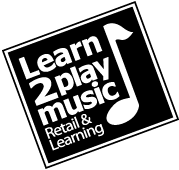 In my mid-twenties, I developed my teaching into a school, bringing in other teachers. I ended up selling my first business in my early twenties. About a year later, I took a bit of time off, came back to teaching, and built up another school, which I sold to my brother, who has had great success with it as well. It’s still well-established – it’s called Learn 2 Play Music, and it’s one of the biggest suburban music schools in Sydney.
In my mid-twenties, I developed my teaching into a school, bringing in other teachers. I ended up selling my first business in my early twenties. About a year later, I took a bit of time off, came back to teaching, and built up another school, which I sold to my brother, who has had great success with it as well. It’s still well-established – it’s called Learn 2 Play Music, and it’s one of the biggest suburban music schools in Sydney.
I launched G4 Guitar Method in 2005. It was a huge success – I opened five schools within two years! We had literally thousands of students enrolling. I sold them off as franchises and expanded into the global G4 Guitar network. We now have over 50 locations around the world.
Wow, fantastic! You went from starting a school, to creating the G4 Guitar Method, to franchising globally. How did this shift come about? Was it about changing the approach? Was it about formalizing what you’d been doing? Was it purely the business model changing?
The importance of playing can’t be stressed enough. I’ve studied this very closely: in a typical lesson with a teacher who’s not very organized, the student plays for about 20% of that lesson. So 80% of the time, they’re not even playing!
That’s a lot of lost time.
I think a lot of it was because of frustration. I see music schools whose owners employ ten or more teachers, and they’re struggling to make decent money because it’s just not a very profitable model.
We’re not lawyers, we’re not surgeons – we can’t be charging people $300 an hour for a music lesson. It’s extremely difficult to charge a fair, competitive rate and pay the teacher fairly while still making some money as a music school owner.
A music school is essentially selling a music teacher’s time. The traditional music school model relies on finding the lowest-payable teacher that would give a reasonable result, and I wasn’t comfortable with that. I wanted good teachers, but good teachers cost money, and you need to therefore charge more, and so forth.
Financially, I did okay as a music school owner. But money aside, there was a lack of freedom in the job, and I had to dedicate many hours to managing over 20 teachers. 12-hour days were not uncommon. While testing and trying many different ways and trying to get the business to adjust, I realized that there was no evidence anywhere of this model working.
I realized that only group teaching models work well with music schools because they give you leverage. And I learned that group teaching is not only better for the teacher, it’s better for the student.
How does group teaching give you leverage?
 One-on-one lessons are like a famous performer like AC/DC or Madonna or Beyonce playing to one person at a time for half an hour. They’re simply not going to make a lot of money. However, when these big performers play to 50,000 people at a time, charging everybody from $50 to $150 for a ticket, they make a lot of money. It’s just a better business plan.
One-on-one lessons are like a famous performer like AC/DC or Madonna or Beyonce playing to one person at a time for half an hour. They’re simply not going to make a lot of money. However, when these big performers play to 50,000 people at a time, charging everybody from $50 to $150 for a ticket, they make a lot of money. It’s just a better business plan.
That’s where I understood the leverage needs to come in.
When I finally sold my Learn2Play Music School back in 2003, I reworked the plan sheet from the bottom up. I’d already been doing some group lessons in my previous music school. This time it was going to be group lessons only: five students for half an hour. I implemented that model, and boom. I was making $200,000 a year within nine months, and it was just mind blowing. It went far beyond my expectations.
What’s even more important, is that the students in our small group lessons were learning better, faster, stronger – and very happy with the results.
Fantastic! It sounds like a triple win: it gave you more freedom by getting you out of that 12-hour day managerial drudge, allowed you to pay your teachers, and provide a better learning experience for the student – all in a more effective model. It sounds like everyone wins, compared with the traditional model.
Now when your teaching and learning inside the G4 Guitar Method, what’s different, compared with the typical one-on-one lesson at the local music school?
First of all, when you teach in groups, you can’t teach like a traditional private teacher.
A traditional private teacher is what I call more like consulting. The teacher asks what you’d like to learn, and you mention a song. The teacher then says, “Okay great, let’s go from the beginning. To play that song, you’re going to play these chords, in these rhythms. I’ll teach you a little bit about what they mean as we go along.” Gradually, they put those bits and pieces together and they learn the songs.
I used this method for many years while teaching privately. To make it viable in terms of income, I needed about 50 students. We would have a half-hour lesson, and the first ten minutes would be spent asking, “Well, what did we do last week?” The lesson was half-over before I even started to teach them anything. A lot of time was lost.
To me, that was a very inefficient way of teaching.
When I started developing my method in 2001, I immediately saw the difference between what I was doing and what most private teachers do: I had a system, a specific way that things worked, and that was critical.
What is the importance of having a system?
I often use the analogy of planes and pilots to explain the G4 Guitar Method: the reason that planes are the safest way to travel is because they follow a system. The pilots have a series of checklists that they follow very strictly.
We have a similar checklist system, so we do a much better job of tracking the students’ progress – the skills they have to learn, the way they learn them, all the things that we need.
We don’t write anything down – everything is printed and organized in a folder. The checklists track where each student is up to, so there’s no need to ask, “What did we do last week?”
We’re not wasting any time on rehashing, so we’re really stripping away all the wastage. This smart use of time is the 80/20 principle, which is what we base our system on.
Tell us about the 80/20 principle. How does it help in learning guitar efficiently?
The 80/20 is about focusing on the skills and the exercises that are going to create the most progress.
The importance of playing can’t be stressed enough. I’ve studied this very closely: in a typical lesson with a teacher who’s not very organized, the student plays for about 20% of that lesson. So 80% of the time, they’re not even playing!
That’s a lot of lost time.
If I can just get that to 40%, then I’ve just doubled the progress of your student. Now, what if I can get it to 80%?
That’s what we aim for – for students to be playing for 80% of the lesson.
That then transfers to home, because if they’ve practiced and worked on something in the lesson for more time, they have a better idea what they’re supposed to be doing when they get home.
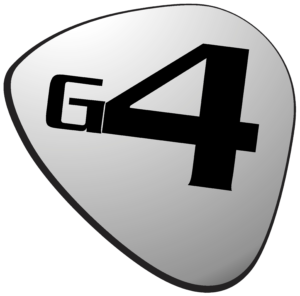 You see these teachers who talk about theory, and concepts, and ideas, and whatever. What about the playing? This is what they’re here to do, it’s the skills, the physical skills, so let’s spend more time on that. Just by doing that, students progress faster.
You see these teachers who talk about theory, and concepts, and ideas, and whatever. What about the playing? This is what they’re here to do, it’s the skills, the physical skills, so let’s spend more time on that. Just by doing that, students progress faster.
Keeping this 80/20 ratio has far reaching implications on what we teach and how we teach it.
With the G4 Guitar method, we assume that students want to learn to play popular music – that’s the majority. We start off by teaching the chords that are most common: E minor, G, C, D, and A minor. Then you’re going to learn the C major, G major, and A minor scales, as they’re the most common.
Learning these common things first helps greatly, as students can then connect it to songs that they want to learn to play. This immediacy is one part of the 80/20.
The other part is the lesson itself. We structure the lessons minute by minute, so we get the most out of each one. We train the teachers in how to work with students – you know, students who ask too many questions, for example.
This is part of the method, the system. We also ensure that the materials that we provide answer as many anticipated questions as possible, so we can focus on what matters: playing!
That’s very interesting. Now, this may be a provocative question: a lot of people these days push for student-led learning and very personalized education where it’s adapted to fit the student’s needs. Isn’t that at odds with the kind of systematic process you just described?
Great question! Student-led learning is where students come to their lesson and dictate exactly how and what they learn so the experience will match what they want and become enjoyable.
This makes complete sense on the surface, but when you dig deeper, you realize that it doesn’t actually all add up.
Take the classic saying by Henry Ford (which Steve Jobs had pinned up on his wall!): “If I had asked people what they wanted, they would have asked for faster horses.” In other words, Henry Ford knew that people didn’t really know what they needed. They wanted to get from A to B faster, but what they would have thought was get me a faster horse so I can get there quicker – they weren’t thinking about cars and automobiles.
So how does that relate to music?
Here’s an analogy that musicians can relate to. When you think about the most successful bands, did they go out and ask the audience, “What music would you like us to write?”
Or are they the bands that said, “We’re just going to write the best music that we love, and hopefully other people will love it as well”?
That’s the approach that we take. We created a method that we love. I love it, and the G4 teachers that work with me love this method. We love the way it works, the structure, everything. The method is not just thought about from the point of view of the student, but also from the viewpoint of the teacher. We ask ourselves, “Will the teacher enjoy administering this method?”
If a student or a teacher comes in and says, “I don’t like this – I just want to learn to play this or that, instead of following your method,” then they’re not right for our method, and our method isn’t right for them – we’re selling sushi and they want a hamburger. And that’s okay. We’re selling what we sell, and we’re the best at what we sell.
It’s been interesting for us at Musical U to explore this whole topic. In reality, there are a couple of really crucial pieces there. One is trying to tailor the big picture vision exactly to the students, so that they stay inspired and know where they’re going. The second is flexibility, so whenever they get stuck, there is a route forward. I imagine with the G4 method, you’ve got plenty of opportunities to adapt the lessons to fit the student’s progress.
Similar to what you said, we’ve also realized that very few students are self-directed learners and have the insight and perspective to plan their own training. In fact, what we’ve tried to do is keep that flexibility but offer a lot more guidance. As you’ve described, there’s enormous value in having a proven system that we know is going to deliver results. And ultimately, it’s the results that the students care about.
They want to get to the destination. You don’t want to go to a patient-directed surgeon! You what the surgeon to know what they were doing.
And most people would choose to have a successful surgery, rather than the surgery that’s fun in the moment, but ultimately doesn’t pan out.
Exactly, so I think it’s really important to understand that there are definitely better ways of doing things than others.
Another analogy that I use is this: a good chef will not cook your steak well-done. They sear it on both sides: “There it is, that’s how I cook it.”
“Oh but I want it… ”
“Sorry, I’m a Master Chef. This is how I cook steak. If you don’t like it, there’s a restaurant down the road where you can tell them how you want your steak, but not here.” You understand the difference there?
Absolutely! I’d love to dig into a bit more is what makes the G4 guitar method a trusted system that delivers results. What is it that makes the G4 guitar method more efficient and effective for your students?
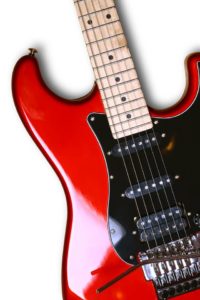 A lot of the methods you see on the shelf at a music store were created 20, 30, 40, or even 50 years ago. For example, the Mel Bay Modern Guitar Method hasn’t really changed since it was created a long time ago. Nor has it been actually tested on students.
A lot of the methods you see on the shelf at a music store were created 20, 30, 40, or even 50 years ago. For example, the Mel Bay Modern Guitar Method hasn’t really changed since it was created a long time ago. Nor has it been actually tested on students.
The first volume of the book sold over 10 million copies. We can say that’s a huge success, which it is. But look at how many Volume Two sold – most people don’t even know what the second one looks like. They can’t even recognize the cover. So what does that tell you?
And very few people actually completed book one in the first place. The method itself caused a lot of students to quit, because it progresses in big hurdles. A more logical way to do, of course, it is in small steps, and to gradually increase the intensity.
The funny thing is that the Mel Bay Method formula was followed up by most of the other major methods on the market. When Mel Bay created the format, nobody questioned it. Nobody asked, “Is this working?”
That’s the difference with G4: we’ve tested our method rigorously. We’ve asked ourselves, “Does this work? Do students quit?”
There’s something called the Goldilocks zone, or the “sweet spot”, where there is enough of a challenge for students to be engaged, but it’s not so difficult that they get discouraged.
We constantly ask ourselves: how do we keep it so that students stay in the game? How do we make it so that they want to keep progressing?
So we make sure we’re always progressing as well, that we’re always improving. This is the difference between us and traditional guitar methods. Mel Bay is the same as it was 40 years ago, whereas G4 isn’t even the same as it was three weeks ago.
Can you give us an example of how you have reworked the G4 Guitar Method to improve students’ experience?
The most recent way we’ve improved our system is by breaking bigger lessons into concrete checklists. For example, we have eight check boxes for each skill. Say a particular level has six chords to learn. For each of the six chords that you learn to play, we tick a new box, and bang – you’ve done that. Then we do scales; once you finish, again, you tick the box.
 This keeps people engaged in real progress. By associating a checkbox with each individual task (for example, one chord = one checkbox), we’re creating a situation where students are going to be ticking boxes off very frequently. Whether it be a chord, a scale, or an arpeggio, there’ll be something that gets learned, and the student’s sense of progress will be tangible.
This keeps people engaged in real progress. By associating a checkbox with each individual task (for example, one chord = one checkbox), we’re creating a situation where students are going to be ticking boxes off very frequently. Whether it be a chord, a scale, or an arpeggio, there’ll be something that gets learned, and the student’s sense of progress will be tangible.
Making the Most of Lessons
By allotting maximum hands-on time for guitar practice, creating a support network through group lessons, and motivating students with tangible demonstrations of their achievements, the G4 Guitar Method ensures that students stick with their practice and continue to progress faster than their traditionally-trained counterparts.
You can apply the tried-and-true concepts of the G4 Guitar Method to your own practice. Try structuring your learning in terms of mini-milestones and maximizing the time you spend actually playing. As you experience the results, check out one of the 50+ G4 Guitar School locations worldwide, or try the method online yourself!
The post A Guitar Method that Works – for Teachers and Students, with David Hart appeared first on Musical U.
🎶 Learning to recognise intervals improves your overall …
https://www.musical-u.com/learn/how-do-you-use-intervals-to-recognise-notes-by-ear/
🎶 Learning to recognise intervals improves your overall sense of relative pitch, and it is this musical sense which allows you to recognise notes, scales, chords, chord progressions and more. 😀 https://www.musical-u.com/learn/how-do-you-use-intervals-to-recognise-notes-by-ear/
When you’re writing a new song you’ll often start out wit…
https://www.musical-u.com/learn/how-to-develop-your-new-songs-theme/
When you’re writing a new song you’ll often start out with the seed of an idea. 🎵 More often than not, this seed becomes the “theme” of the song for you – and often for the listener too. But how do you go beyond that simple seed and grow it into a full theme? 🎶 https://www.musical-u.com/learn/how-to-develop-your-new-songs-theme/
How To Tune A Guitar By Ear
A lot of discussion can be had over whether the guitar should be tuned by ear or with the help of an electronic device. As we’re about to see, tuning by ear has multiple benefits over the “easier” path of using a tuner.
Guitars go out of tune for all sorts of different reasons, and you won’t always have an electronic tuner around to help you out. For quick, on-the-fly tuning, tuning by ear reigns supreme.
By the end of this guide on how to tune a guitar for beginners, you’ll know how to tune your guitar with just your hands and ears, popular alternate tunings, and how to check that you’ve tuned correctly by using a piano.
Why You Should Tune Your Guitar By Ear (Instead of Relying on an Electronic Tuner)
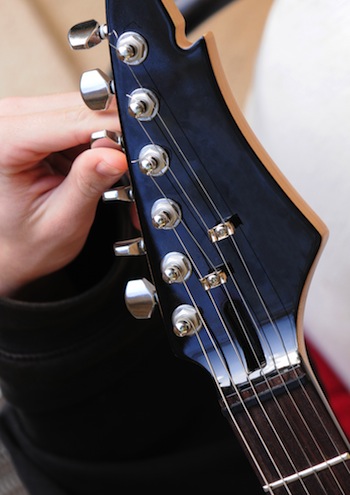 Learning how to tune a guitar with a tuner is easy. You’ve probably got one of the thousand-and-one guitar tuner phone apps or software that can pick up your guitar sound, analyse the frequencies and tell you how you should turn your tuning pegs. You can find electronic tuner boxes all around any guitar shop. Maybe there’s even one built into your acoustic guitar.
Learning how to tune a guitar with a tuner is easy. You’ve probably got one of the thousand-and-one guitar tuner phone apps or software that can pick up your guitar sound, analyse the frequencies and tell you how you should turn your tuning pegs. You can find electronic tuner boxes all around any guitar shop. Maybe there’s even one built into your acoustic guitar.
So why am I encouraging you to practice tuning by ear?
It’s because it lays the foundation of pitch ear training. If you can understand the pitch relationships between notes and become sensitive to details of tuning just by consistently tuning your guitar every day, you’ll have built a solid foundation of pitch skills.
After a month’s practice, you’ll be able to strum once and instantly tell whether the guitar is in tune or not, and a little after that you will even be able to tell straight-off which string sounds different than it should. So tuning by ear lays the basic foundation for understanding notes just by listening. Some guitarists even use it as the basis for developing perfect pitch.
Step By Step Instructions For Tuning A Guitar By Ear
Here is our guide to how to standard tune your guitar by ear. But before we dive into the nitty-gritty of tuning, it’s important to understand the basics of your guitar.
Prepare: Check Your Pegs
Then, if you haven’t tuned your guitar before, take a moment to familiarise yourself with your tuning pegs. Depending on whether your pegs are all on one side (electric style) or three on each side (acoustic style) and whether the guitar has been strung in the normal way, the directionality of each peg might vary.
You want to find out: does turning the peg clockwise make the string tighter (and its pitch higher) or looser (and its pitch lower)?
Once you get familiar with this setup on your guitar it will become instinctive and you won’t need to think about it again. Now that you know which way to turn each peg to make that string go higher or lower, you are ready to begin. Lowest string first…
Prepare: Understand How Guitar Strings Work
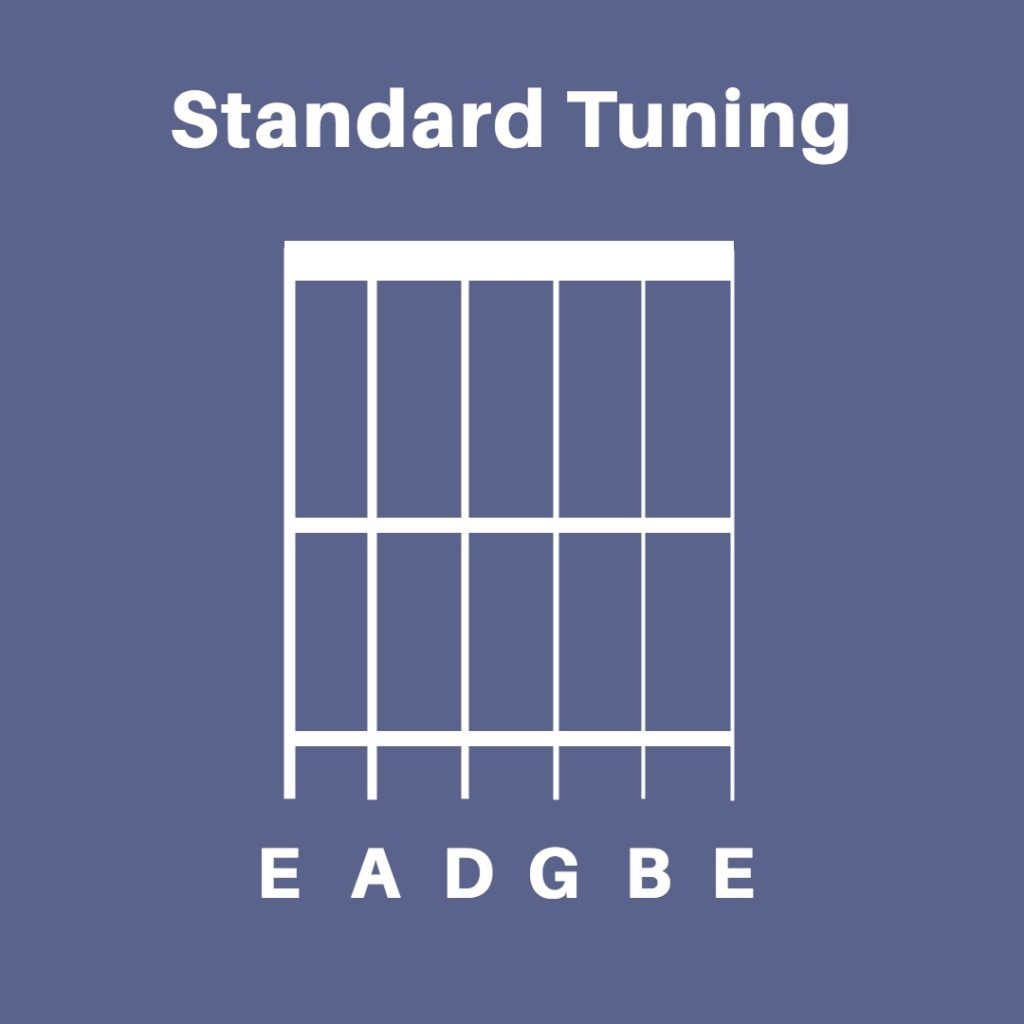 When you’re looking down at the six strings of your guitar, you’ll notice that the strings go from thickest to thinnest. The topmost thickest one is your low E string, also called the sixth string. Following that, the next thickest is A, or the fifth string, and so on, all the way to your first string (the high E). The pitch order of strings in standard tuning, from sixth string to first string, and therefore from lowest to highest, is EADGBE. We always tune in “reverse” order, starting with the sixth string, or low E, and continuing in order all the way to the first string, or high E.
When you’re looking down at the six strings of your guitar, you’ll notice that the strings go from thickest to thinnest. The topmost thickest one is your low E string, also called the sixth string. Following that, the next thickest is A, or the fifth string, and so on, all the way to your first string (the high E). The pitch order of strings in standard tuning, from sixth string to first string, and therefore from lowest to highest, is EADGBE. We always tune in “reverse” order, starting with the sixth string, or low E, and continuing in order all the way to the first string, or high E.
You can help yourself remember this pitch sequence with a mnemonic, such as “Every Apple Does Go Bad Eventually”. For for something more ominous, you can use “Eddie Ate Dynamite Good Bye Eddie”.
Sixth String: Low E
Listen to any example of a “correct” E note as your reference pitch. For example you can use a recording of a standard E note like the one below and play it in your speakers, or use a pitch pipe. Listen, and play the E string of your guitar.
If you use a guitar sound, pitch pipe or other simple “tone” it is comparatively easy to tune by ear. If you have to use another instrument such as a nearby piano, you might find the difference in timbre makes it harder to compare the notes’ pitches.
Now, after playing the reference E note, let the sixth string of your guitar ring, and if you find the two sound perfectly the same, then your sixth string is in tune. More likely you will hear a slight clash (discord) which means your guitar string is slightly out of tune.
As you practice tuning and do pitch ear training you’ll find you can directly hear whether your guitar string is too high or too low. At first it might take a bit of experimentation.
Slowly rotate the tuning peg of your sixth string, gradually adjusting in one direction to see if the two notes come into agreement. If they don’t, and you hear that the pitches are becoming further apart, simply reverse your direction and adjust pitch until the two notes match.
Note: The tension of the string shouldn’t become too high (i.e. tight) or too low (i.e. loose). This means you are trying to tune the string into either a higher octave, where the note would match but the string would become so tight it might snap, or a lower octave, where the string would become unplayably loose.
Fifth string: A
Once the E string is in tune, you can put your reference note aside – from here you can tune the other strings based on your (now nicely-tuned) sixth string.
On the E string, playing the 5th fret should produce the same note as the open A string. So, place your finger on the 5th fret and play both the E string and the A string one by one. If the A string sounds higher, rotate its tuning peg to lower its pitch. If it sounds lower, rotate it the other way. Until and unless you feel that the notes sound exactly the same when played in unison, you should adjust the tuning peg accordingly.
Fourth string: D
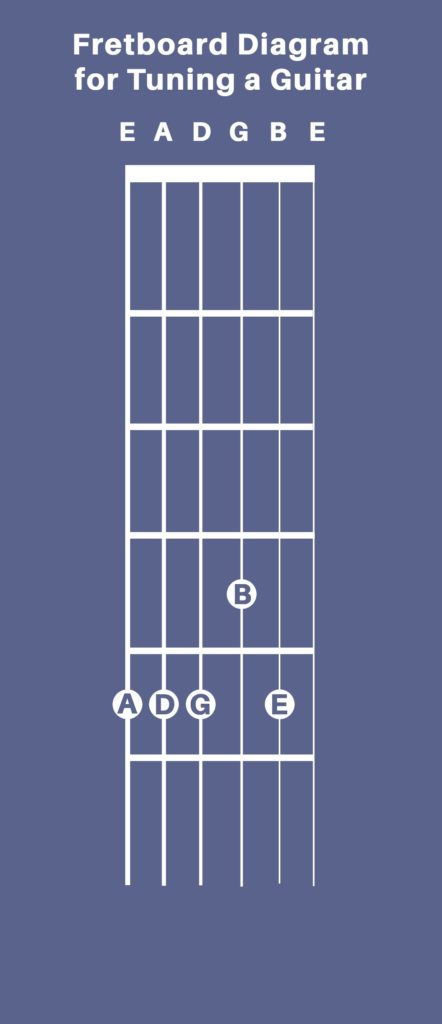 The note on the 5th fret of the A string you just tuned will be same as the open note of the D string you’ll tune next. Play the two strings in unison, by placing your finger of 5th fret of the fifth string and ringing the open note of the fourth string. Listen for whether the two notes are the same, in close discord, or have a noticeable gap in pitch. Adjust your tuning peg until you hear they are perfectly tuned.
The note on the 5th fret of the A string you just tuned will be same as the open note of the D string you’ll tune next. Play the two strings in unison, by placing your finger of 5th fret of the fifth string and ringing the open note of the fourth string. Listen for whether the two notes are the same, in close discord, or have a noticeable gap in pitch. Adjust your tuning peg until you hear they are perfectly tuned.
Third string: G
Timbre problems may arise when you try to tune your third string (which represents the G note) to the fourth string. This is because on both acoustic and electric guitars there is typically a change in string type: either from nylon to steel or from single strings to wound strings. This affects the timbre of the note and can make it harder to directly compare pitches. Don’t worry, you’ll get the hang of this soon enough!
Now you should be getting the hang of the process as you tune your third string, which should be a G note. On the 5th fret of your fourth string is a G, so you can use this to tune your third string’s open note. Once again, listen to it and check if they sound similar. If not, turn the tuning peg for higher or lower pitch until they match.
Second string: B
Pro Tip:It’s the 4th fret we use this time, not the 5th!
Nearly finished!
Place your finger on the 4th fret of the third string, which will produce a B, the same as the open note of your second string. Or at least, it will be once you tune up that second string! Adjust your B string, until the two notes sound alike.
First string: High E
Finally the last one, your high E string. You can tune this in two ways:
- Since your low E string is already tuned, you can tune your high E by referring to this one. However, note that they are actually two octaves apart, so you may find this gap makes it difficult to compare the two pitches.
- If you are new to tuning you might want to avoid that, and instead continue with the method we have been using: place your finger on the 5th fret of the second (B) string, and you will play an E which exactly matches your open first string. Again, rotate counter-clockwise for higher pitch and clockwise for lower pitch.
You’re Done!
Finish up the tuning process by checking each of those note pairs in turn, from your low E and A string on up. Check the low E against your source note again. If any don’t sound quite correct, adjust the peg to make them match, but make sure you follow the low-to-high sequence again. This means that if the pair of notes don’t match, adjust the tuning of the higher string to match the lower one. This way your tuning is always rooted on your low E string. If you have access to a reference note for the high E string you can also check that one directly.
Finally, strum a few chords and play a riff or two. Does anything sound strange or wrong with the tuning? If so, listen carefully and try to identify which string is to blame. Then return to your note pair comparisons to make the required fix.
Pro Tip: The method we’ve described also works for the 12-string guitar, with some tweaks. Also, because its four strings follow the same tuning as the bottom four strings of the guitar (EADG), this method can easily be used to tune the bass guitar.
How Do I Know If I’ve Tuned Correctly?
When you’re just starting to tune your guitar by ear, you’ll want to check that you’ve done it right. This can be achieved in several ways. You’ll feel tempted to simply tune with these methods to begin with, but we encourage you to resist the temptation! Use these methods to double-check that your tuning by ear was done correctly.
Check with a Tuner
Broadly speaking, there are three types of tuners out there that you can use, with each suited to different scenarios.
A standard tuner is a rectangular, “box-shape” tuner that tells you if and by how much your note is off-pitch from standard tuning. It can be used with both electric and acoustic guitars; the built-in microphone picks up on the pitch you are playing, or you can use the tuner’s input jack for a more precise reading for electric or electroacoustic guitars.
A pedal tuner is simply a guitar pedal that simply checks the pitch of your strings instead of laying fuzz or distortion over your sound. They are incredibly precise, but unfortunately only work with electric or electroacoustic guitars.
A headstock tuner will clip onto your guitar, sensing the pitch of a string through the vibrations created when you pluck a string, and telling you whether your note is flattened, sharpened, or just right. If you’re wondering how to most accurately tune a classical guitar, this is it.
Also, if you were wondering whether you can tune a ukulele with a guitar tuner, the answer is absolutely yes: many headstock tuners have a “ukulele” setting.
Pick one that works with your guitar, and see how accurate your tuning by ear is!
Check with a Piano
As well as being an easy and reliable way to check your tuning, this is a good ear training exercise for recognizing the same pitch on two different instruments. Simply compare the pitch of each string to the pitch of the corresponding key on the piano.
The best part is, you don’t even have to worry about an octave difference. Here’s a cheat sheet for which keys correspond to each pitch for guitar standard tuning; the numbers designate the note’s position from the left on a standard piano keyboard. For example, D3 is the third-lowest D key on the piano. Middle C is shown in orange:
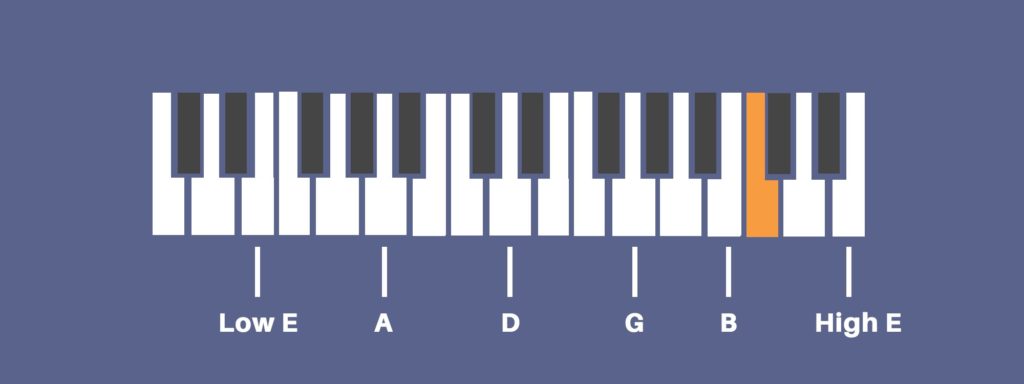
Alternate Tunings
The tuning EADGBE is known as standard tuning, and is the most popular.
However, it is far from being your only option. You can alter the tuning of a string or two to open up a whole new way of playing, with chords that would be impossible in standard tuning! The best part: you can do this with just your hands and ears, no tuner necessary. Electronic tuners often don’t have settings for these alternate tunings, so it’s incredibly useful to be able to do this by ear!
If you want to push limits of your guitar playing and songwriting, try one of the following alternate tunings. With each one, you’ll want to start in standard EADGBE tuning, and tweak accordingly.
How to Tune a Guitar a Half-Step Down
You may see some guitar tabs asking that you tune each string a half-step down. Fear not – this isn’t nearly as much of a pain as you may think.
- Fret the fifth (A) string at the sixth fret. This will produce an Eb, which you will use as a reference note to tune your sixth string.
- Fret the newly Eb-tuned sixth string at the fifth fret. This will produce an Ab, which you will use as a reference note to tune your fifth string.
- Fret the newly Ab-tuned fifth string at the fifth fret. This will produce a Db, which you will use as a reference note to tune your fourth string.
- Fret the newly Db-tuned fourth string at the fifth fret. This will produce a Gb, which you will use as a reference note to tune your third string.
- Fret the newly Gb-tuned third string at the fourth fret. This will produce a Bb, which you will use as a reference note to tune your second string.
- Fret the newly Bb-tuned second string at the fifth fret. This will produce an Eb, which you will use as a reference note to tune your first (top) string.
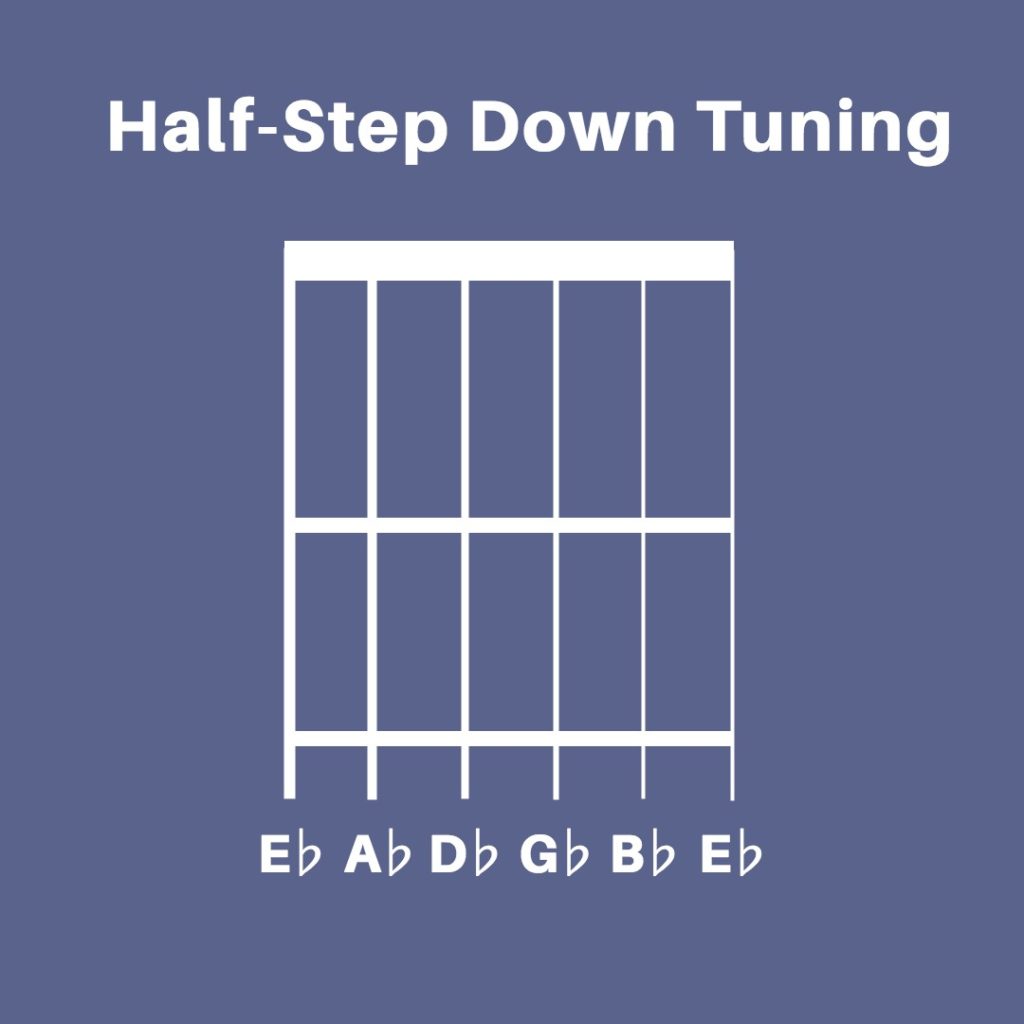
How to Tune a Guitar to Drop D
Drop D tuning differs from standard tuning in only one way: the sixth string is tuned down one tone, from E to D, resulting in DADGBE tuning.
To drop D tune a guitar, simply lower your sixth string by a whole tone by comparing it to the open fourth D string:
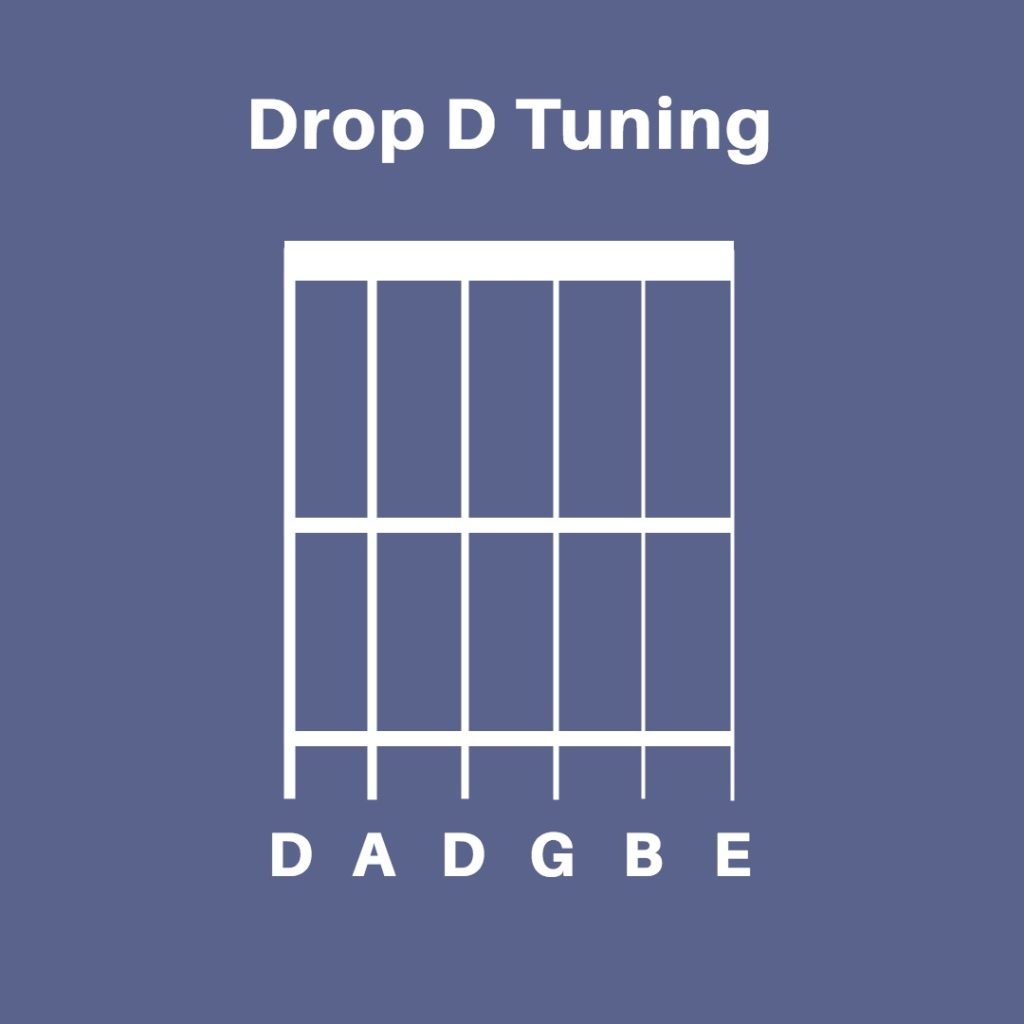
This is one of the simplest tunings, and is popular in blues, country, and folk.
How to Tune a Guitar to Open G
In this tuning, strumming your guitar without putting any fingers on the fretboard will result in a G chord. The pitch pattern will be DGDGBD.
Start by lowering your sixth and first strings from E to D by comparing them to the open fourth string. Then, lower your fifth string by a whole tone by comparing it to the third string. This may take a bit of practice because of the octave difference, but will soon become second nature!
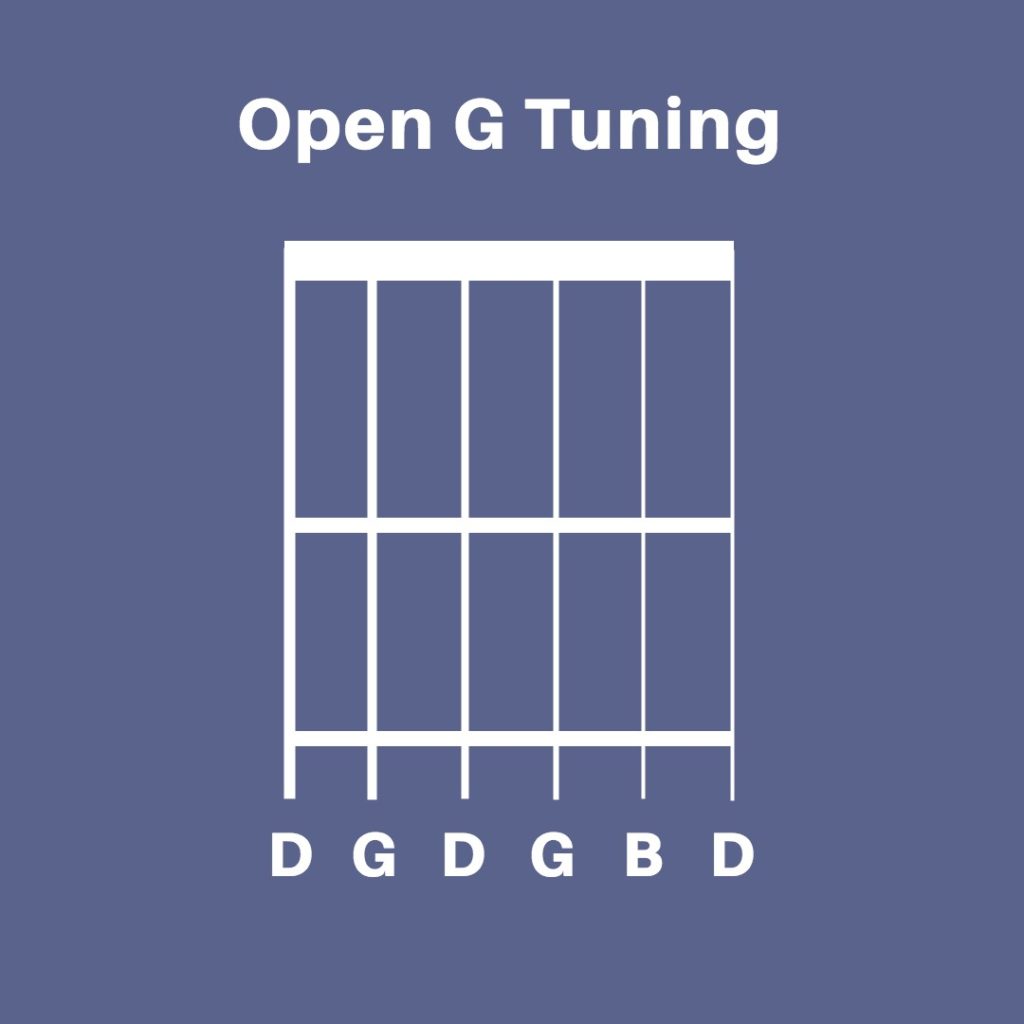
In this tuning, you can play any major chord simply by barring your finger across different frets – no need for complicated chord shapes!
Open G tuning is popular in blues and rock, most notably because of Keith Richards, who wrote the riffs for many of the Rolling Stones’ most popular songs with this tuning. If you want to cover “Brown Sugar” or “Gimme Shelter”, do it in open G!
How to Tune a Guitar to Drop C
Drop C tuning, or CGCFAD, creates a heavier, lower sound on your guitar. This tuning is more advanced than the previous ones, as it requires you to change the pitch of every string. As always, start in standard tuning. Then:
- Fret the fifth (A) string at the third fret. This is your reference for what the sixth string should sound like, although the sixth string should be one octave lower.
- Fret the newly C-tuned sixth string at the seventh fret. This will produce a G, which you will use as a reference note to tune your fifth string.
- Fret the newly G-tuned fifth string at the fifth fret. This will produce a C, which you will use as a reference note to tune your fourth string.
- Fret the newly C-tuned fourth string at the fifth fret. This will produce an F, which you will use as a reference note to tune your third string.
- Fret the newly F-tuned third string at the fourth fret. This will produce an A, which you will use as a reference note to tune your second string.
- Fret the newly A-tuned second string at the fifth fret. This will produce a D, which you will use as a reference note to tune your second string.
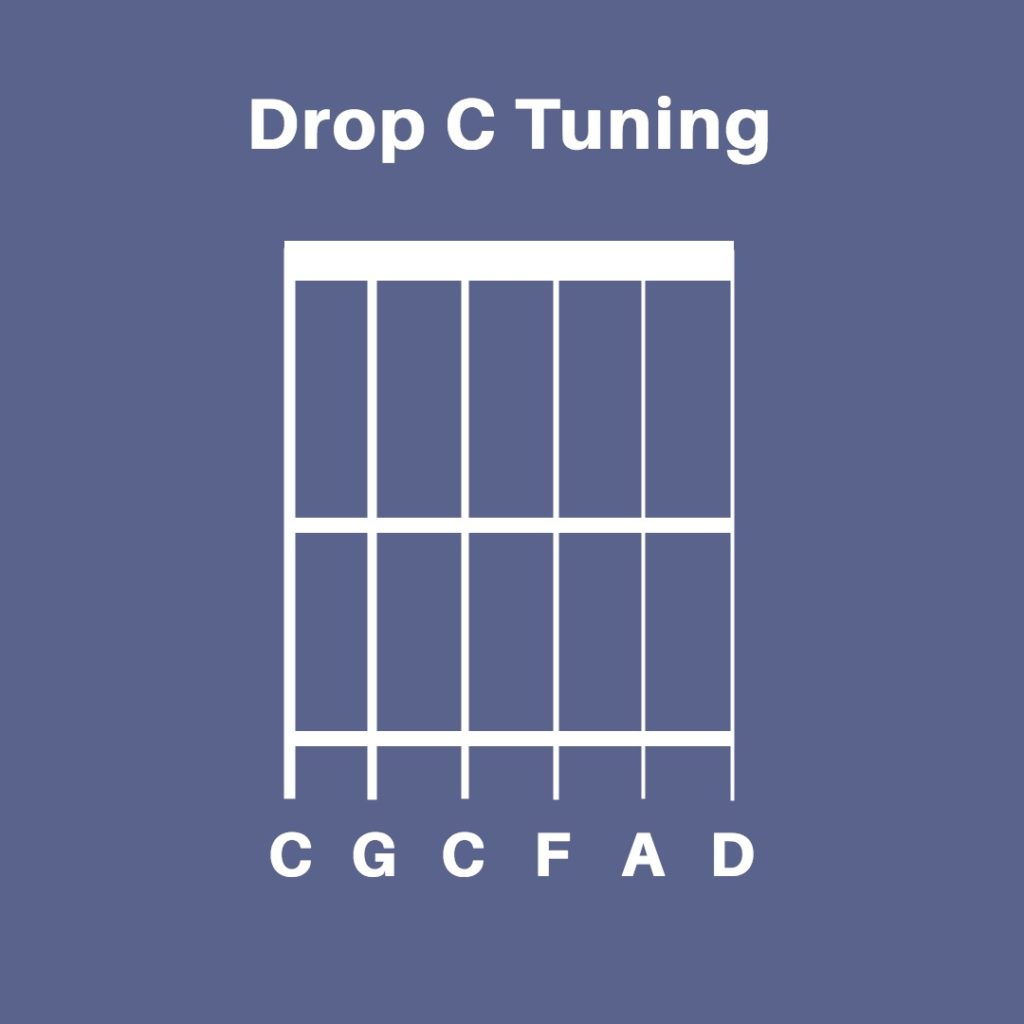
Tuning By Ear While Training Your Ear
The first few times you tune a guitar by ear, it can be frustrating – sometimes you just can’t track down that strange-sounding string. It may be tempting to reach for that electronic tuner, but don’t give up! Your ear will steadily get better and better at recognizing those “off” notes, and tweaking them to the right pitch.
Best of all, your sensitivity to pitch will improve considerably, making you a better musician all-round, and helping you with your improvisation, singing, songwriting, and more.
The post How To Tune A Guitar By Ear appeared first on Musical U.